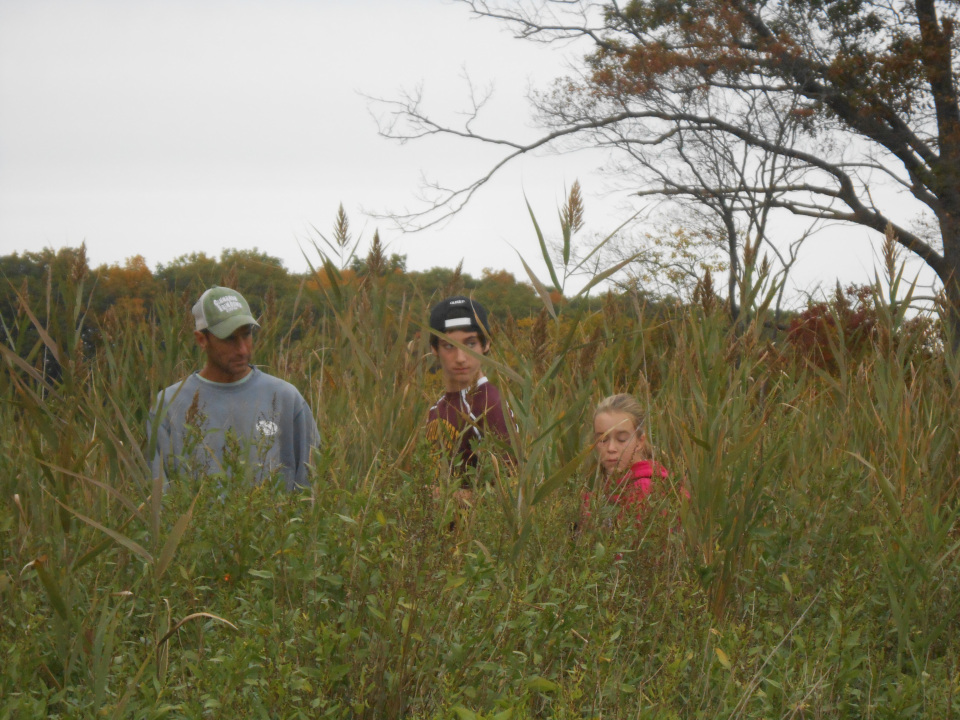
11 October 2013
Rowley, Massachusetts
I’m standing in the sandy soil of Stackyard Road adjacent to the marsh of Clubhead Creek. The day is overcast and the light wind makes it cool, but it’s still a nice day on the marsh in October with an air temperature of 18 C (60 F). A white van arrives, bouncing in the tire-swallowing holes. Mr. John Reynolds, a teacher at Ruppert Nock Middle School in Newburyport, emerges. He’s thin and a young-looking 50. His dark complexion signals that he spends a lot of time outside. In fact, his teaching curriculum is centered on taking his students into the wilds of Essex County to explore the local ecosystems. The students have been kayaking on rivers, biking to parks, and sitting in nature to listen, to watch, and to smell. Today they are here to experience the living laboratory of the salt marsh.
Ten seventh-grade scientists of varied sizes emerge from the van and are joined by the Assistant Principal Ms. Lisa Furlong. We get right to work. These scientists are eager and excited to be outside. Instead of smartphones, these students have field notebooks and pencils in their hands. Instead of distractions, the students have questions.
We start with the first step of the scientific method: observation. They observe that the invasive reed Phragmites is found only near the upland edge or near the road and that most of the marsh is dominated by Spartina spp. We move to the next step: Hypothesis generation. They hypothesize that soil salinity is driving these plant patterns, specifically, that Phragmites is limited by high soil salinities and that Phragmites soils will have lower salinities than the Spartina soils. After a quick lesson on how to use a refractometer, we move on to the next step: Hypothesis testing. Two teams sample the marsh soils for salinity in the two plant zones. The Phrag team is swallowed by the reeds and a member of the Spart team discovers that straight lines in the marsh mean leg-swallowing ditches. They create data tables and convene to share their data. The results? Phragmites soil: ~32 parts per thousand (ppt), Spartina soils: ~45 ppt. Hypothesis supported! In fact, in general, Phragmites is limited in growth and expansion by higher soil salinities. A more detailed study in the Parker River marshes by Mass Audubon can be found here.
Red blazes of sea-pickle streak the marsh. It is a succulent, like a cactus, and after some rigorous coaxing (squeezing the heck out of it) we get some sea-pickle juice on the refractometer. It has an internal salinity of 90 ppt (marine salt water is 32-35 ppt)! That’s almost 10% salt! You can learn more about why sea-pickle (also called pickleweed) is so salty here.
The eager young scientists are let loose on the marsh to find what life lies beneath the now brown, but still thick grass. They combine their treasures in a box and we discuss what they had found in a scientific show and tell. I kneel down next to the box on the ground and am surrounded by a forest of middle school students. Mr. Reynolds and Ms. Furlong are pushed to the side, like the losers of a game of Duck-Duck Goose (does anyone play that anymore)? The young scientists point to their individual treasures. There’s the coffee bean snail, Melampus bidentatus, which is a pulmonate (air-breathing) and mostly terrestrial snail that is still connected to the sea by planktonic larvae. Scribble of pencils on notebooks. There are small wolf spiders. The molt of the invasive green crab, Carcinus maenas. More scribbling. A field cricket (the males of which use their wings, NOT their legs, to make cricket calls to woo their ladies). A ribbed mussel, Geukensia demissa which are not good to eat, unlike their cousins the blue mussel. Scribble. And now zombie amphipods. Amphipods (also called marsh hoppers) are normally brown, but orange amphipods are parasitized with a trematode that changes their behavior and makes them exhibit risky behavior so they can be eaten by birds (the bird is the final host of the parasite life cycle).
I open the trunk of my Honda Civic for larger and possibly more charismatic critters of the marsh. I pull out several horseshoe crab molts, including a large female the size of a hubcab and reported to have been at least 25 years old. The scribbling is abandoned for tactile experiences. I pass around the molts and let the students touch the lacquered, large female. The students learn how to tell the difference between males (the ‘boxing glove’) and females and that sexually maturity occurs when they are at least 9-11 years old. And why the male has ‘boxing glove’ claws (to hold on to the female for mating). I tell them about the blue blood of these crabs and how it’s important to our own health (more on this later).
For the final act I pull two unhappy, but alive lobsters from a brown paper sack. I teach them how to tell the male from females (I teach the students, not the lobsters – I think the lobsters already know) and the function of their different claws (one is a cutter and one is a crusher). More tactile experiences as the lobsters are passed around. Now when they play with their food they will do it with knowledge! And the phones finally come out. Pictures taken, posted and tweeted to the field notebook of the world.
I am excited by the enthusiasm of these young investigators. I mean, isn’t that why I do science, because it’s cool?
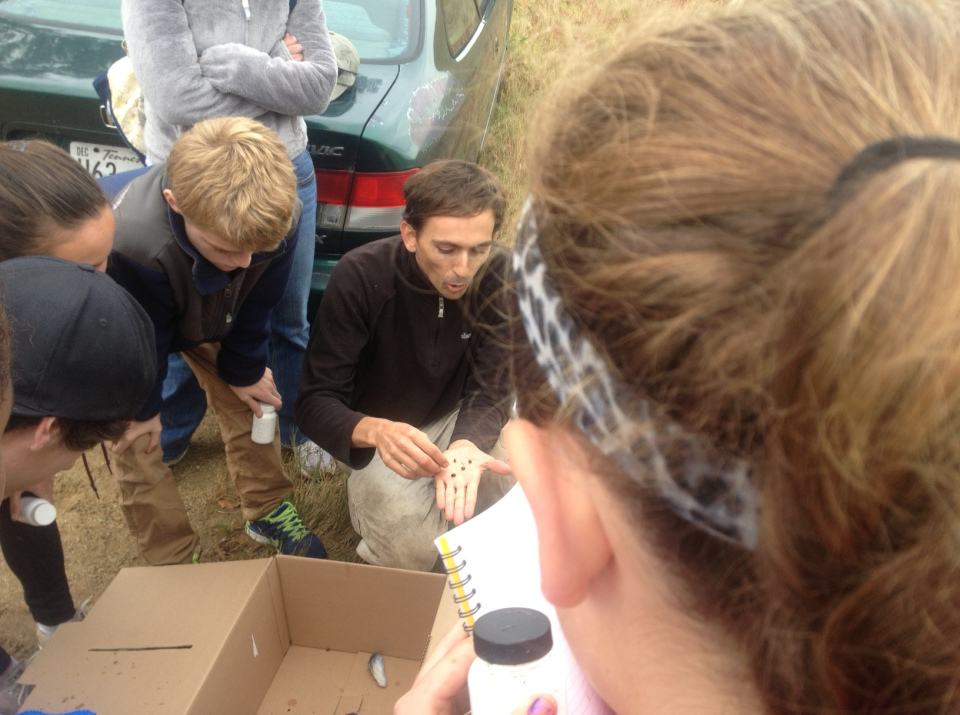
The tide has risen to edge of the road, another cycle completing. The students give their thanks and climb into the white van. Handshakes and thanks are exchanged between me and the Ruppert Nock Middle School teachers. And then we drive and bounce down the pocked road of Stackyard and reflect on what we all had just learned.
– David
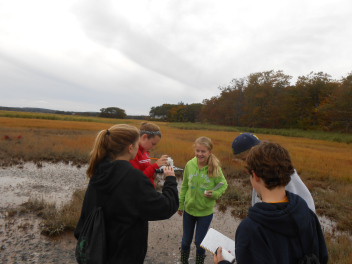
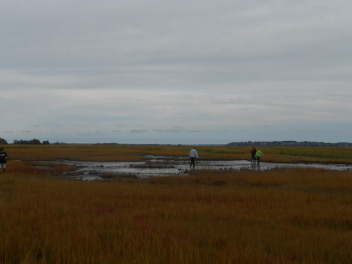
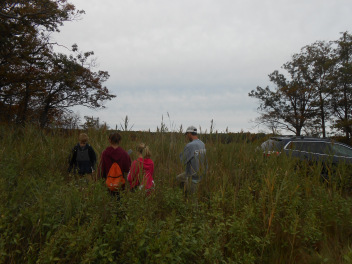
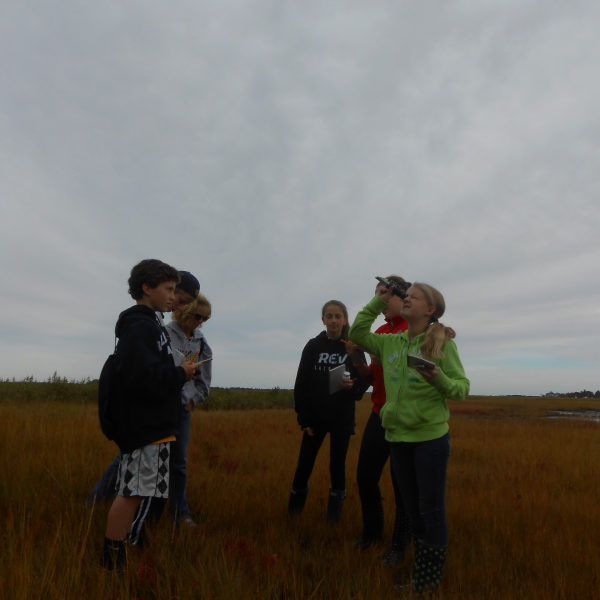
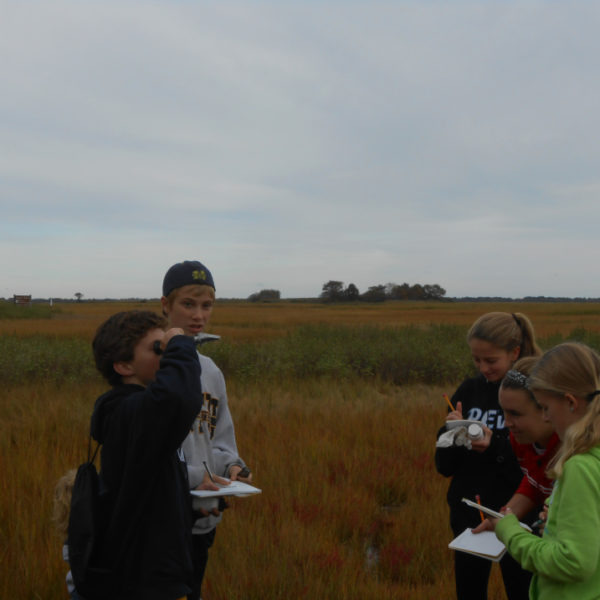
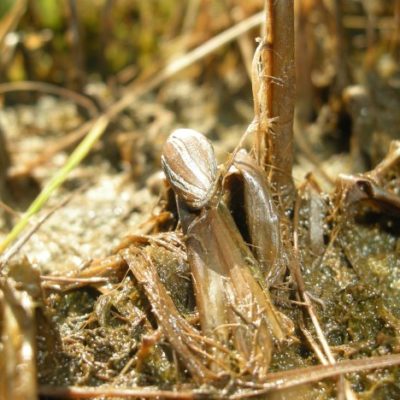
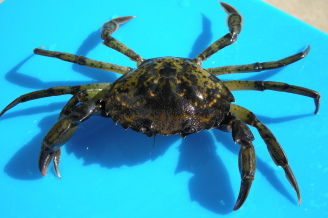
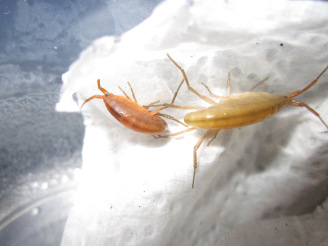
fromrome2theworld
Thanks for a great blog David! Always enjoy reading (and learning from) these blogs!
tideproject
Thank you Susan! Thank you for reading and learning all the way from Italy!
The TIDE Project
[…] communities local to the marshes we study. The OA module germinated from a conversation I had when John Reynolds brought a dozen of his students to the marsh as part of his outdoor curriculum. […]